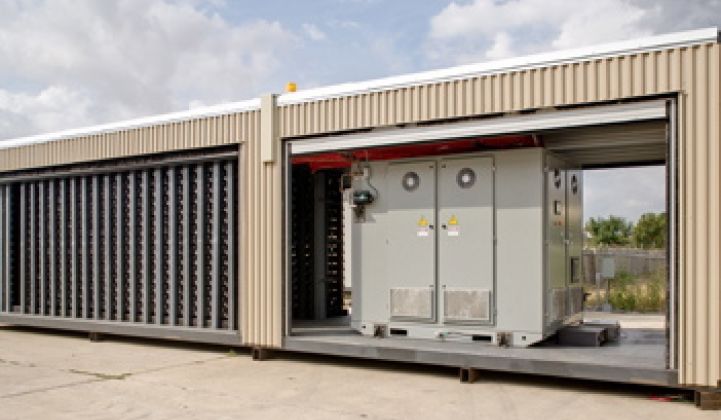Energy storage would seem to have the potential to transform variable renewable energy sources like wind and photovoltaics into baseload power, to change the way utilities price and buy energy, and to provide a natural solution for fragile island grids.
But so far, the potential of energy storage (other than pumped hydro) remains just that -- potential. And suppliers in the electrochemical battery storage market are going through some growing pains.
"A smoke alarm went off" early Wednesday morning on the north shore of Oahu, Hawaii, at the 12-turbine, 30-megawatt Kahuku wind farm, according to an Xtreme Power spokesperson. Developed by First Wind, the Kahuku facility is augmented with a 15-megawatt battery from VC-funded Xtreme Power and sells power to the island utility, HECO.
As reported by Hawaii News Now, "Flames destroyed a crucial building, raising questions about Kahuku Wind's future."
Firefighters did not enter the building until seven hours after the flames started because of questions regarding the toxicity of the "12,000 batteries." The Honolulu Fire Department said a fire at the same building in April 2011 burned itself out. There was another fire in May of this year, and both fires were attributed to ECI capacitors in inverters from Dynapower. Xtreme is suing Dynapower, according to Courthouse News Service.
In today's fire, portions of the building collapsed. No one was injured. (Video of the fire from Hawaii News Now is here.)
A Fire Department spokesperson said it appeared that the fire started in or near the battery banks and then spread, according to the article. Xtreme's CEO Alan Gotcher, said they were investigating and that there was no issue with hazardous material at the site and no danger to the community.
When we spoke with him this afternoon, Gotcher noted that the site had been running since February 2011 and the units shut down when smoke was detected.
Xtreme Founder and Chairman Carlos Coe told me in an earlier interview that the site was the largest energy storage system integrated with a wind farm in the U.S. It was also the first renewable energy project to be completed under the Department of Energy’s loan guarantee program, which supplied $117 million for construction in July 2010. Coe said the batteries employed ballistic-grade fiber and that "there's about a mile of that fiber in the power cell," adding that "it's a dry cell, it's unique and the key features are pretty interesting." The battery technology was originally developed by Tracor and Ford Aerospace for electric vehicle applications.
Xtreme's "chemical capacitor" storage technology is meant to match lithium-ion battery performance, all using dry and inert materials that can operate at room temperatures, unlike the leading grid-scale technology of sodium sulfur batteries.
First Wind has another wind-battery site near Haleiwa, known as the Kawailoa Project, which was commissioned in June and is "running beautifully," according to the CEO.
In numerous conversations with GTM, Xtreme's executives have stressed that they supply a system, rife with controls and communication, not just a battery, and that the intelligence and integration of their system was what distinguished them from other firms that offer nothing more than a unique battery chemistry. These recent incidents might prove their point.
Xtreme Power is backed by SAIL Venture Partners, Bessemer Venture Partners, The Dow Chemical Company, Fluor Corp., BP Alternative Energy, Dominion Resources, POSCO ICT, SkyLake & Co. and Spring Ventures.
As Jeff St. John reports, "Grid-scale energy storage is still too expensive to compete against gas-fired peaker plants in almost all cases. That's limited it to places where high power costs and difficulties of integrating intermittent wind and solar power into the grid make them effective -- as in Hawaii or Kodiak Island -- or in places where batteries let utilities avoid building brand-new transmission or distribution infrastructure."
Xtreme 's battery competition comes from A123, Saft, AltairNano and Japanese giants like Mitsubishi, Panasonic and Hitachi. Beacon Power used flywheels for frequency regulation and went bankrupt (although its project lives on), and NGK had its own recent share of pyrotechnics with its sodium sulfur batteries. A123 has yet to make a profit and sits in a precarious financial position despite its unique lithium-ion chemistry.



